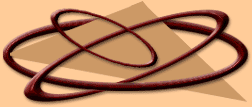
| Home | Reading List | Articles |
|
Relaxed Hair Care |
 |
|
|
What is hair?
|
||||||||||
|
The physiology of hair. Understanding the nature of hair helps to understand how and why your
hair should be cared for.
|
||||||||||
|
You have probably heard at one time or another that hair is dead - but is it? The hair you see outside your scalp, physiologically speaking, is dead. It has no blood supply,
nerve supply, or muscles. If cut, you feel no pain; nor does it bleed; nor does it pull a muscle when stretched. However,
for a `dead' fibre it is quite remarkable. A healthy hair will stretch up to 30% of it's length, can absorb it's weight in
water and can swell up to 20% of it's diameter. An average head of hair when twisted together can support 23 tons in weight
- it is stronger than copper wire of the same diameter. We change it's colour, it's shape, it's curl, wash it, brush it, set it, spray it, tease it,
pull it and rub it to an extraordinary degree, and yet, despite all this, our hair remains amazingly resilient and tough. Hair is composed of keratin, a protein consisting of amino acids containing sulphur, mainly
cystine, and is built from cells similar to those of the skin. The hair shaft or strand has 3 distinct layers: the outer cuticle,
which itself has 8 or 9 layers of overlapping cells, like fish scales or roof shingles; the cortex, comprising the hair's
main bulk and colour; and the medulla, a thin core of transparent cells and air spaces. Each hair grows from a follicle, an indentation in the skin, of which we are born with a specific
number. The size of the follicle determines the thickness, and often, the length of the hair. At the base of the follicle, lying in the dermis (the deeper layer of the skin) is the papilla,
the bud of the hair where most growth takes place. Each follicle has it's own blood, nerve and muscle supply. The nerves and
muscles give the hair it's tactile properties, allowing the slightest movement to be felt. When the muscles contract, through
fear or cold, the hair stands up more and The crinkling of sheep's wool is due to irregular contractions of the sheep's hair follicle
muscles - (called arrector pili), which change the shape of the follicle and, therefore, the curly characteristics of the
wool produced. There is no published evidence that this occurs with human hair, but, the unexplained changes from straight
hair to wavy hair, or vice versa, can possibly be due to arrector pili changes influenced through the nerve endings due to
metabolic disturbances. The blood capillaries surrounding the follicle, and in the papilla, carry the nourishment needed
for all reproduction and growth. Again, hair is remarkable: its cell reproduction is the second most prolific in the human
body, bone marrow being the first. This is the reason why hair is extremely sensitive to changes occurring in the body. Hair grows about half an inch (1.25cm) a month - faster in summer than winter. The growth phase
- anagen - lasts an average of 3-5 years, so a full length hair averages 18-30 inches. At the end of anagen, the hair enters
catagen, a short intermediary phase prior to telogen - the resting phase leading to the hair being shed. After shedding it's
hair, the follicle rests for 3 months, and the whole process is repeated. Each hair follicle is independent, having it's own growth cycle at different times, otherwise
all your hair would fall out at once, so the loss and replacement is gradual - over a period of 3 - 5 years. With an average
of 115,000 -120,000 hairs, this means that you can afford to lose about 70 hairs a day - but sometimes this is not necessarily
a true reflection - the replacement factor is important.
|
||||||||||